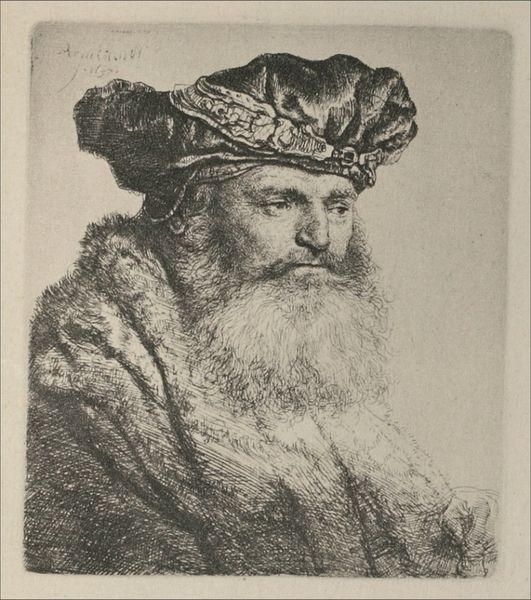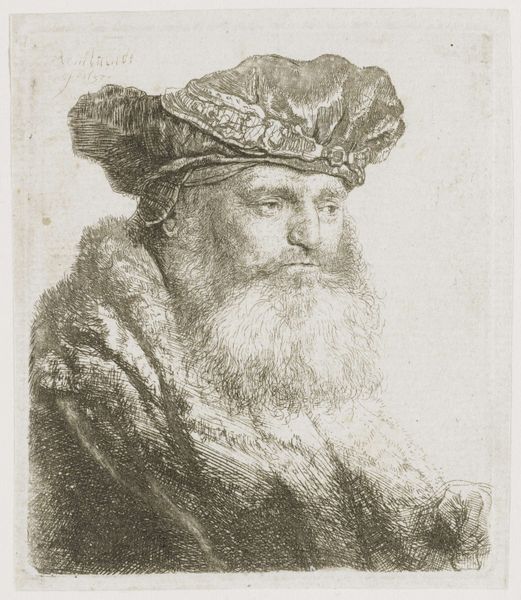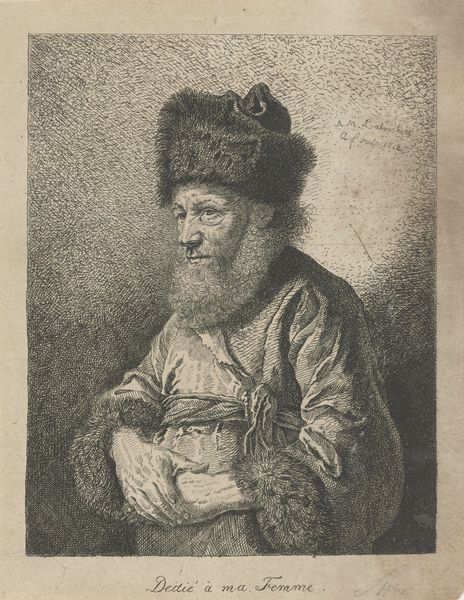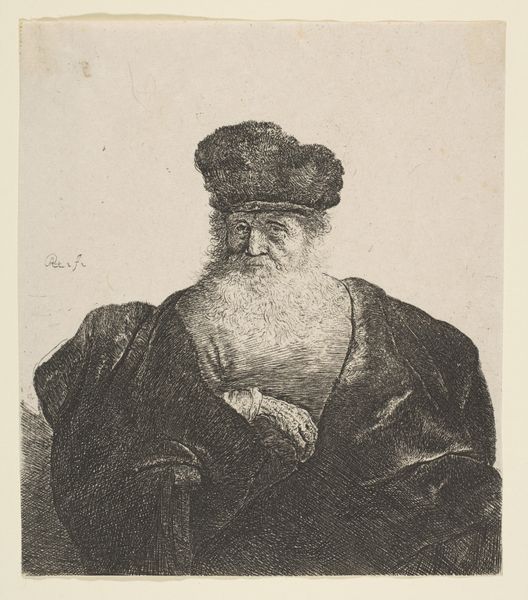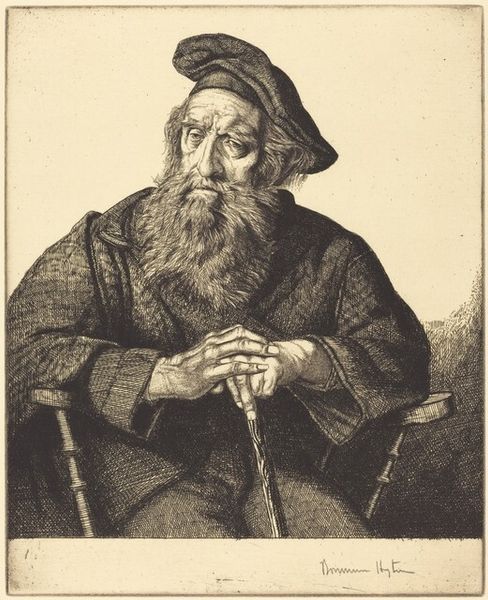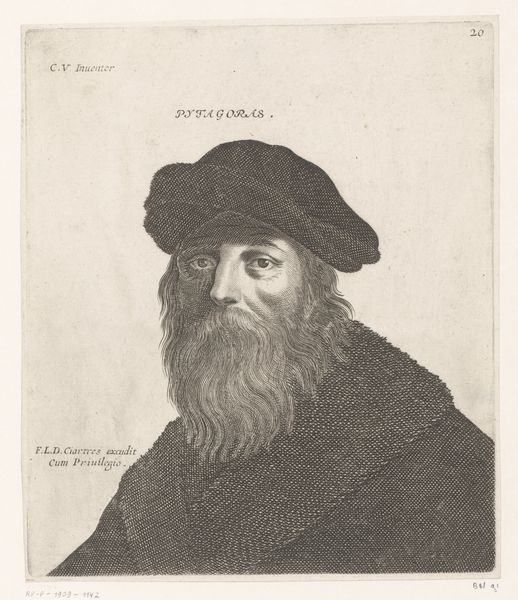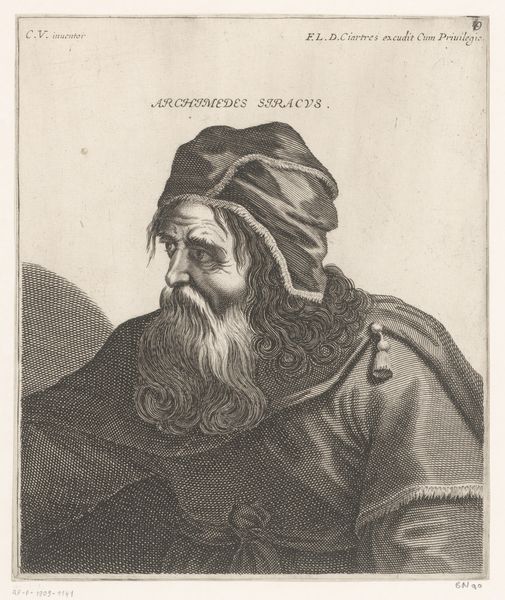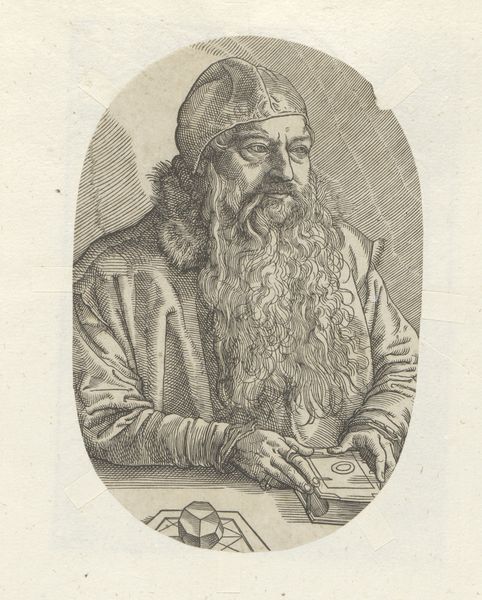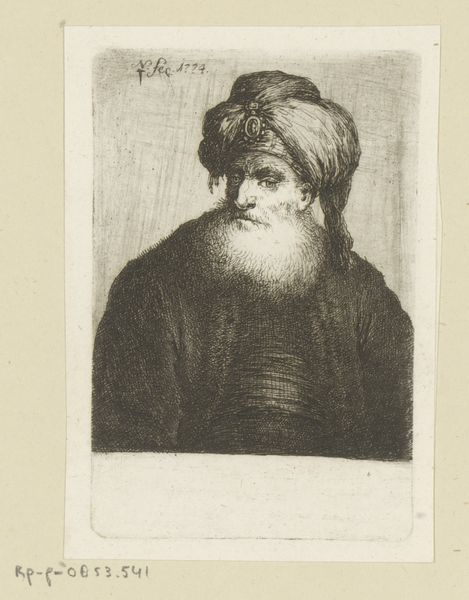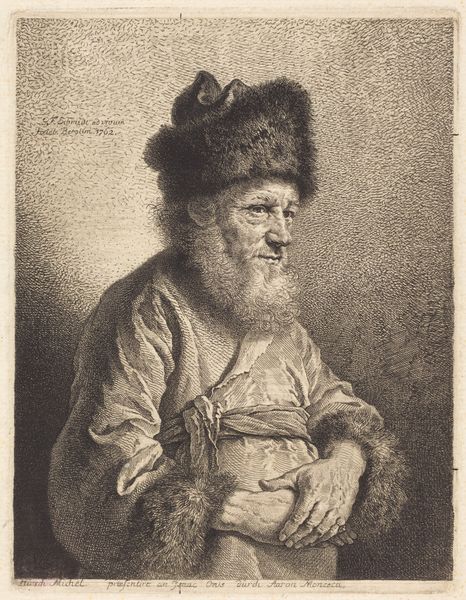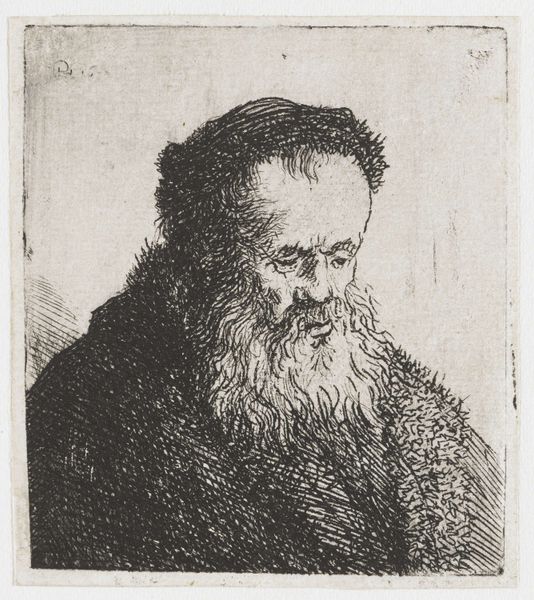
drawing, etching, paper, ink
#
portrait
#
drawing
#
baroque
#
etching
#
paper
#
ink
#
15_18th-century
#
history-painting
Copyright: Public Domain
Curator: This drawing is entitled "Head of an Oriental Man, Facing Right" by Johann Georg Trautmann, using etching ink on paper in the 18th century. What do you make of it? Editor: It evokes a somber, almost melancholic mood. The use of dense, intricate lines really emphasizes the weight and age of the subject. Curator: The density is part of Trautmann's technique here, I think. He often explored historical themes, and there’s a kind of gravitas he’s aiming for through that etching. Editor: Absolutely, but "Oriental" is itself such a loaded historical term. It immediately situates this image within a history of Western representation of the East. Curator: Indeed. Yet within its time, this depiction engages a long history of representing wise elders with elaborate headdresses, signifiers of cultural and religious distinction. Editor: The very notion of depicting the 'exotic other' reinforced existing power dynamics, with Europe placing itself as a central and superior observer. Curator: Of course, and his beard is quite substantial! Facial hair as a symbol, or signifier, it carries ideas of wisdom, piety and masculinity. Editor: But doesn’t it also act as a mask? We never see a fully visible, human face, just lines portraying an ideal more than a person, almost dehumanizing him, obscuring individuality under stereotypes. Curator: The symbolism is strong. Consider the headgear—it suggests a composite idea of the ‘Orient,’ less about a single, truthful depiction than a kind of cultural memory encoded in dress. Editor: The fact that the work resides in the Städel Museum today invites questions about cultural preservation and what voices or communities were unheard, or overlooked, throughout this period. Curator: It's precisely this type of dialogue we want to spark. What histories we choose to preserve, what artistic statements have something to say beyond what might have been immediately obvious. Editor: By understanding those roots, we can analyze today's social and power structures reflected even within art from so long ago. Curator: An image, then, holding up a mirror to more than one reality.
Comments
No comments
Be the first to comment and join the conversation on the ultimate creative platform.

